Smart Router Engine
The Smart Router is a sophisticated component of Ottu's online payment management systems, engineered to enhance payment transaction efficiency.
It intelligently routes each payment through the most efficient path by dynamically selecting the most suitable payment gateway (PG) based on a range of pre-configured criteria. This feature is vital for businesses looking to optimize payment processing, reduce transaction costs, and improve success rates.
By empowering merchants to customize their payment routing, the Smart Router ensures that transactions are processed efficiently, enhancing overall operational effectiveness and customer satisfaction.
Dynamic Routing: Smart Router assesses each transaction on multiple criteria, choosing the optimal path for processing based on pre-set rules.
Routing Strategies: The Smart Router follows a variety of strategic methods and types to determine the most efficient path for processing transactions, ensuring both reliability and cost-effectiveness.
Strategies types:
Multi-selection strategies allow for selecting among several potential MIDs based on preset criteria, expanding the pool of possibilities for the routing decision.
Single-selection strategies narrow the choices to the most suitable single MID, making the final routing decision straightforward and decisive.
Strategies Methods:
Exclude Unavailable Strategy (Multi Selection):
Error Event Threshold: Triggers blacklisting based on recent error counts.
Blacklist Duration: Options include specific hours or until midnight.
Expiration: Specifies the blackout duration in hours.
Transaction Size Strategy (Multi Selection):
Minimum Amount: Defines the lowest transaction amount acceptable per PGMID.
Maximum Amount: Caps the highest transaction amount per PGMID.
Round Robin (Single Selection):
This strategy ensures that transactions are evenly distributed across available Payment Gateways by cycling through them in order, giving each gateway equal opportunity to handle transactions.
Fallback (Single Selection):
This strategy acts as a safety net, where transactions are automatically routed to a backup Payment Gateway if the primary options are unavailable or fail.
Easy Configuration: Configurable directly from the Admin Panel with options to activate, set identifiers, and choose strategies pertinent to business needs.
Multi-Channel Support: Supports a variety of payment channels, such as e-commerce transaction & payment request. Selecting from available channels can be performed here.
Increased Transaction Success Rates: By intelligently selecting the most suitable payment gateway, Smart Router minimizes the chances of transaction failures.
Cost Efficiency: Routes transactions in a way that could potentially lower transaction fees by choosing the most cost-effective gateway.
Enhanced Customer Satisfaction: Faster processing times and higher transaction success rates lead to a better customer experience.
Scalability and Flexibility: Adapts to varying transaction volumes and types without requiring manual intervention, making it ideal for businesses scaling their operations.
Risk Mitigation: Minimizes exposure to gateway-specific issues by dynamically switching between multiple gateways based on real-time performance and availability.
The core functionality of the Smart Router is to enhance payment transaction efficiency by intelligently routing each payment to the most suitable payment gateway. It dynamically selects gateways based on pre-configured criteria, allowing for customization and control. This results in optimized payment processing, reduced transaction costs, and improved success rates, thereby enhancing overall operational effectiveness and customer satisfaction.
This diagram illustrates the sequence of transactions initiated on any platform, like an e-commerce website, and follows through to the final processing by the bank. The steps include:
Transaction Initiation: Starts from an external channel, like an e-commerce site.
Smart Router: Upon receiving a transaction, the Smart Router assesses various criteria to select the most suitable payment gateway (PG) based on pre-configured rules.
- Recommended Routing Process:
Database of MIDs: Repository where Merchant Identification Numbers (MIDs) are stored for transaction processing.
Strategy (1) Multi-Selection: Allows selecting multiple MIDs simultaneously for efficiency.
Strategy (2) Single/Multiple Selection: Selection of either one or multiple MIDs. Depending on the choice:
Multiple MIDs lead to a repeated selection process.
A single MID moves directly to the final step (6).
Repetition of Multiple Selection Process (n-1) Times: If multiple MIDs are selected, this iterative process repeatedly refines the choices. Each iteration assesses the MIDs against the configured Strategy, narrowing down the selection.
Strategy (n) Single Selection: Finalizes the selection to one MID, ensuring it fits the transaction requirement.
Pass the Selected MID: The chosen MID is forwarded to the transaction processing system to complete the transaction.
Payment Gateway: The Smart Router directs the transaction to the chosen PG.
Bank Processing: The selected PG then processes the payment by forwarding it to the associated bank.
From the Ottu Dashboard, click on the three dots in the top right corner and select Administration Panel. Proceed to the PGSR section. Click on the Add Smart Router button, and a configuration form will automatically display. The form requires the following parameters to be filled:
- Code Identifier:
Defines the identifier for the Smart Router. This identifier replaces pg_codes in the Checkout API.
- Strategies:
Choose one or multiple routing strategies for the transaction. Included:
- Exclude Unavailable Strategy (Multi Selection):
Error Event Threshold: Count of recent error events triggering a payment method's blacklist.
Blacklist Expiration Mode: Duration of blacklisting, with options for specific hours or until midnight.
Number of Hours for Expiration: Duration in hours for which a payment method remains blacklisted if set to specific hours.
- Transaction Size Strategy (Multi Selection):
Minimum Amount: Specifies the minimum transaction amount acceptable for processing through this PGMID. The amount must be greater than 0, ensuring that the payment method is utilized for transactions within its intended range.
Maximum Amount: Sets the maximum transaction amount that can be processed through this PGMID, preventing high-value transactions from being processed through unsuitable payment methods.
- Round Robin (Single Selection)
It is a method that shares transactions equally across available Payment Gateways. It does this by moving in order, from one gateway to the next, ensuring each one gets a turn.
- Fallback (Single Selection)
It is strategy where transactions are automatically sent to a backup Payment Gateway if the first option dosen't work.
What are single and multi-selection?
- Multiple Selection Strategy (Inclusive Strategy)
It allows for the selection of multiple merchant identifiers (MIDs) within a single transaction. For instance, the "Transaction Size Strategy" might choose multiple MIDs that support a specific transaction value, such as 100 KWD. This approach broadens the pool of available MIDs for subsequent strategies in the processing pipeline.
- Single Selection Strategy (Exclusive Strategy)
It restricts the selection to just one merchant identifier (MID) per transaction. For example, the "Round Robin Strategy" selects a single MID from the available options to forward along the routing pipeline. This strategy is definitive, precisely determining the MID for further processing.
- Plugin:
Select the supported payment plugin. available options: Payment Request or E-Commerce.
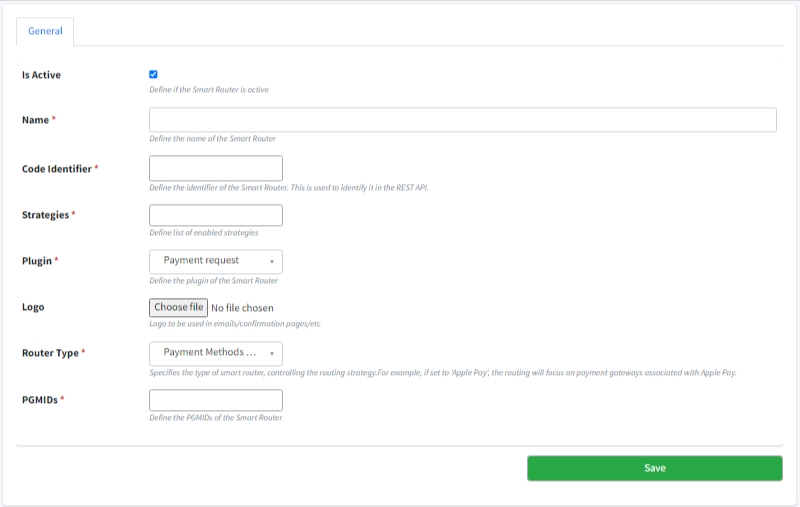
The Transaction Size Strategy is a targeted approach optimized for determining the most appropriate Merchant Identification Number (MID) based on the transaction amount. This method enhances the efficiency and optimizes the workflow of payment processing by ensuring that each transaction is routed to a suitable MID, according to specific administrative configurations and validation rules. The strategy unfolds through a structured process:
Start Processing Transaction: Initially, the strategy commences by processing the incoming transaction to assess its amount.
Get Transaction Amount: It extracts the amount of the transaction to identify which MIDs are applicable.
Filter MIDs Within Amount Range: MIDs are filtered to find those that fall within the transaction's minimum and maximum amount range.
Matching MIDs Verification: Checking for MIDs that meet specific transaction amount requirements
Non-compliance Action: Select MID Based on Criteria:
Select MID with Lowest Min Amount: If the transaction amount is below the minimum of all MIDs, the MID with the lowest minimum amount is chosen.
Select MID with Highest Max Amount: Conversely, if the transaction amount surpasses the maximum limit of all MIDs, the MID with the highest maximum amount is selected.
Finalize MID Selection: The final stage involves confirming and finalizing the MID for processing the payment.
This structured process ensures that payments are processed efficiently by selecting the most appropriate MID, based on the transaction size. This approach not only streamlines the payment workflow but also ensures a higher level of transaction processing efficiency.
In this example, we will create a Smart Router instance that utilizes the Transaction Size Strategy. The following steps will demonstrate how to configure the Smart Router and define the criteria for selected MIDs, specifically MPGS and Knet MIDs.
Step 1: Create a Smart Router Instance
Navigate to the PGSR (Smart Router section) in the Administration Panel and click on the Add Smart Router button. Fill in the required details as shown in the figure below:
Smart Router Configuration:
Name: Smart Router Example
Is Active: Yes
Code Identifier: smart_router_example
Strategies: Transaction Size Strategy
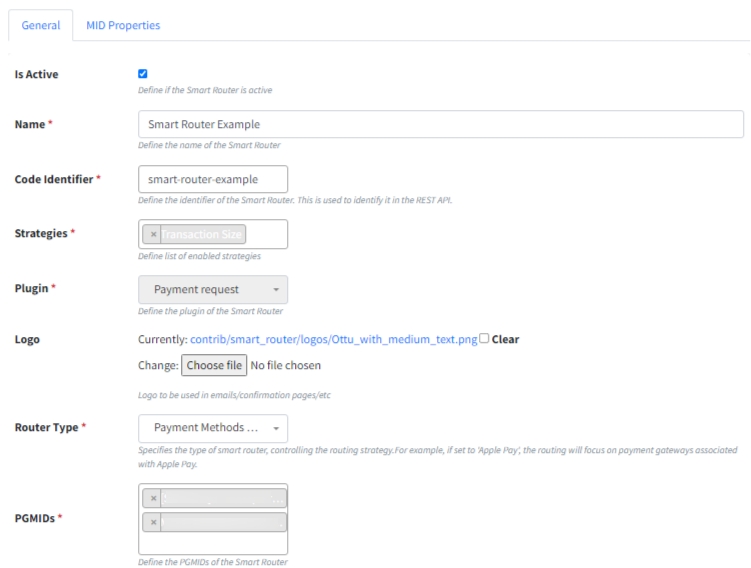
Step 2: Define Criteria for Selected MIDs
Since we are using the Transaction Size Strategy, the criteria for this strategy must be defined for each selected MID. The figure below shows the criteria defined for MPGS and Knet MIDs:
Knet MID Criteria:
Minimum Amount: 1
Maximum Amount: 50
MPGS MID Criteria:
Minimum Amount: 51
Maximum Amount: 100
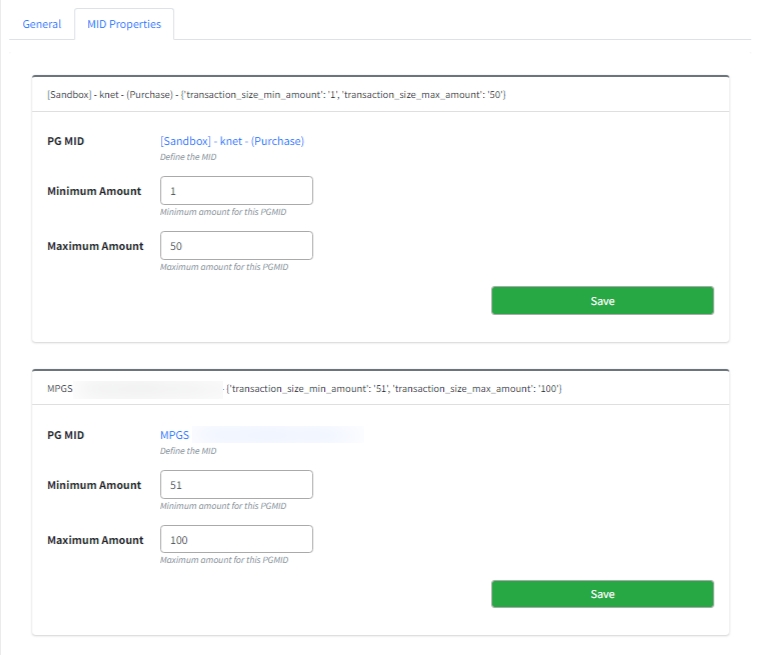
Step 3: Create a Checkout Link Using Checkout API
Using the Checkout API, we will create a checkout link. Below is the payload request for creating the checkout link:
The generated checkout link will redirect to the Checkout Page where the customer will click on the Pay button.
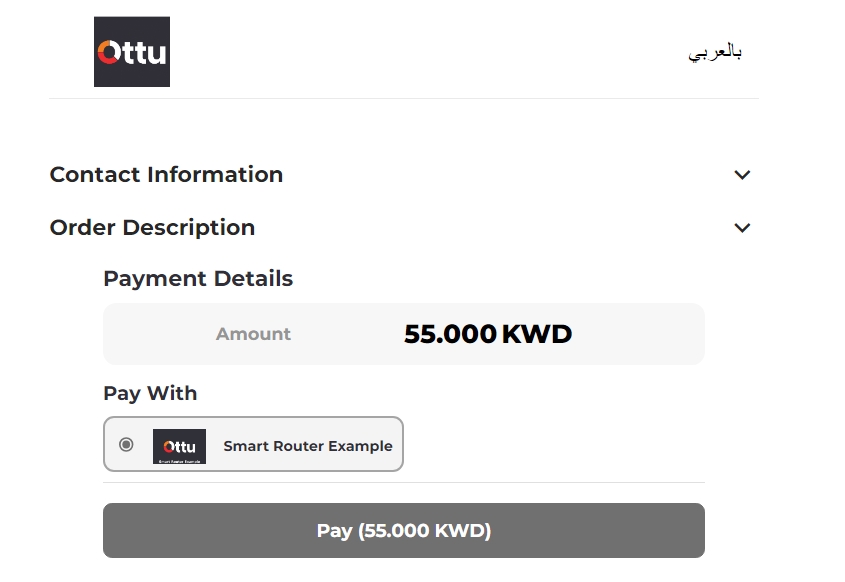
Step 4: Payment Processing with Smart Router
Once the pay button is clicked, the Smart Router starts functioning to choose the best path between the two chosen MIDs (MPGS and Knet). The path selection is based on the defined criteria.
As shown in the figure below, the chosen MID is MPGS since the transaction amount is 55, which falls within the range of the defined MPGS criteria.
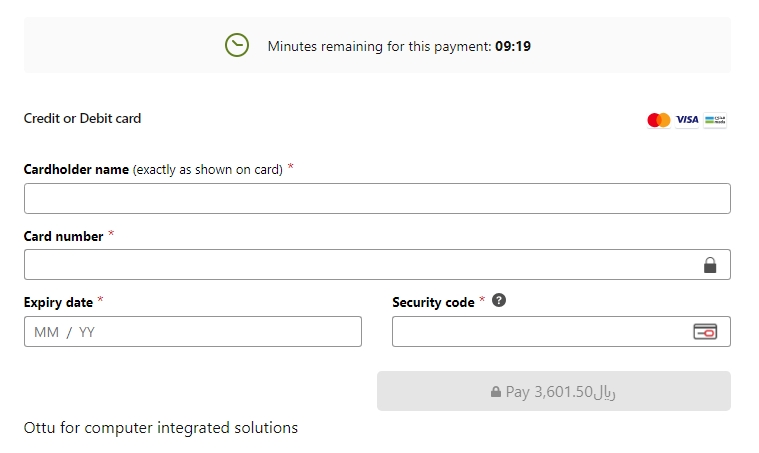
If we change the amount in the request payload to be 50.
The Smart Router will choose Knet since the defined range covers the amount, as shown in the figure below:
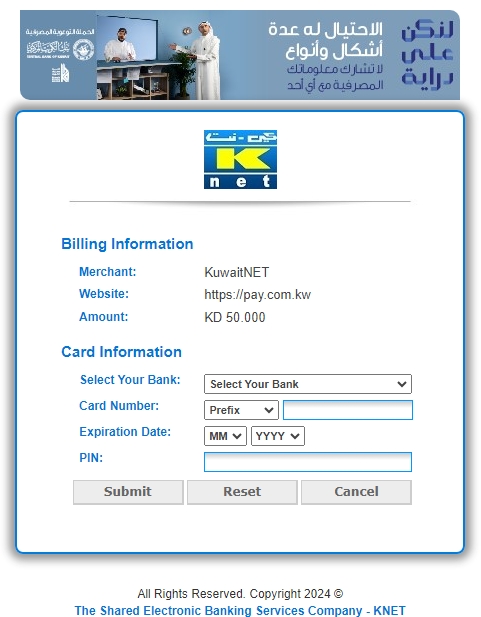
Conclusion
By following these steps, we demonstrated how to create a Smart Router instance using the Transaction Size Strategy and defined criteria for MPGS and Knet MIDs. This example illustrates how the Smart Router dynamically selects the most appropriate payment gateway based on the transaction amount, optimizing the payment processing workflow and enhancing overall efficiency.
The Smart Router is an integral component of Ottu's payment management systems designed to optimize transaction efficiency by intelligently routing payments through the most effective payment gateway based on pre-configured criteria. This results in reduced transaction costs, improved success rates, and enhanced customer satisfaction.
Smart Router uses dynamic routing strategies to select the optimal path for processing payments. It considers various pre-set rules and strategies. For more information about the available strategies, please refer here.
The process begins by selecting multiple MIDs simultaneously for efficiency, then you can choose either one or several MIDs. If multiple MIDs are selected, an iterative process refines the selection through repeated evaluations until one suitable MID is identified. If a single MID is chosen, it proceeds directly to the final step. This MID is then forwarded to the transaction processing system to complete the transaction. For more details, please refer to the Recommended Routing Process.
Multiple Selection Strategies allow selecting among several MIDs based on criteria, which broadens the possibilities for the routing decision.
Single Selection Strategies narrow the choices to the most suitable single MID, making the routing decision straightforward and decisive.
For more details please refer here.
Fallback strategy where transactions are automatically routed to a backup payment gateway, ensuring continuous processing without manual intervention.
To set up a new Smart Router, navigate to the Smart Router section, click on Add Smart Router, and provide the necessary details in the form that appears. This includes naming the router, activating it, and choosing suitable routing strategies. For more detials, please refer to Creating New Smart Router section.